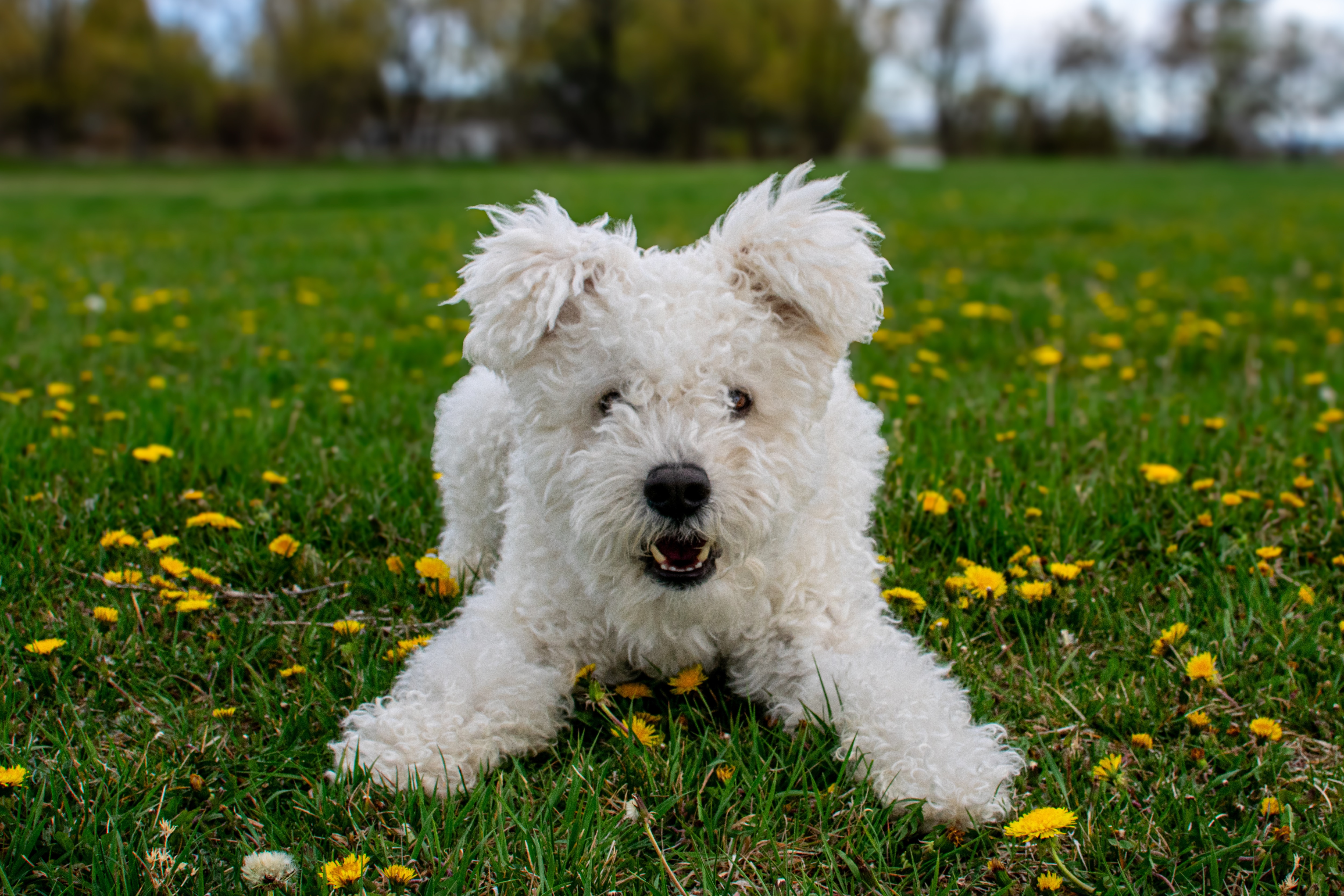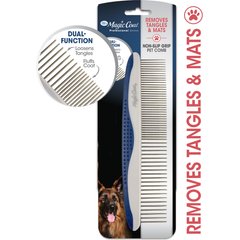Pumi
Sue Thatcher/iStock / Getty Images Plus via Getty Images
The Pumi is a Hungarian dog bred to be a fast-moving and intelligent helper for shepherds. These curly coated dogs were tasked with moving herds of sheep or cattle, and needed to think independently but work in close cooperation with humans, according to the Hungarian Pumi Club of America (HPCA).
When full-grown, the Pumi dog stands 15–18.5 inches tall and weighs 22–29 pounds.
Caring for a Pumi
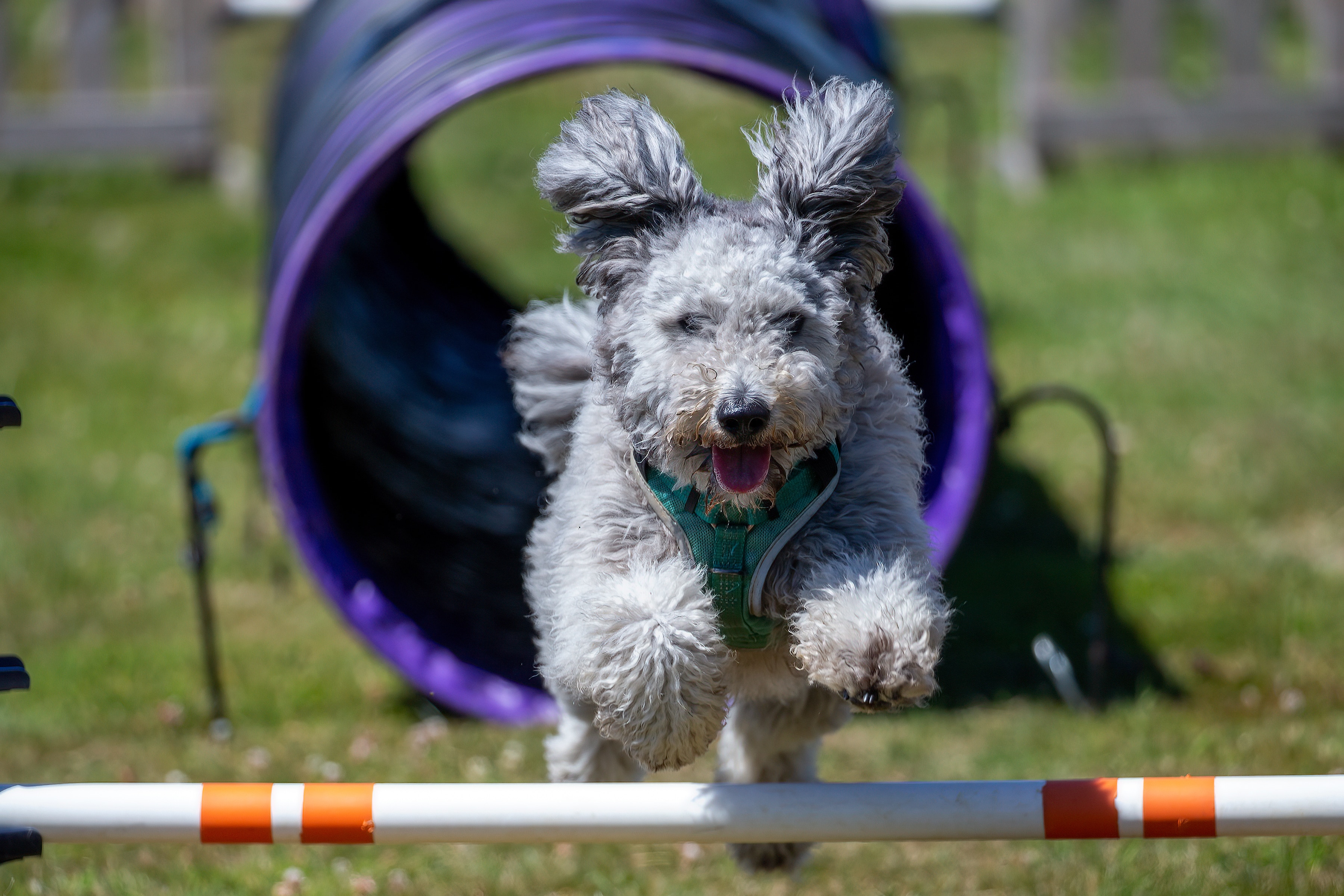
The Hungarian Pumi resembles a teddy bear, thanks to the breed’s semi-erect ears; curly coat; and dark, expressive eyes. Although Pumik (the plural name for the breed) appear cute and cuddly, don’t underestimate the versatility, work ethic, and smarts of this herding breed.
The Pumi has the agility and aptitude for many activities, including hiking and dog sports. Find regular activities to do with your dog: Pumik are energetic and need daily activity to stimulate the mind and exercise the body.
“They are extremely bright, and if their brains are not engaged on a regular basis, mischief can happen,” says Nancy Nelson, president of the Hungarian Pumi Club of America.
At home, a Pumi will settle down easily. And while they tend to attach themselves closely to one person, these dogs are a good fit for families if given proper training and socialization.
Pumi Health Issues
The Pumi dog breed is considered generally healthy, and most Pumik live to be 12–13 years old. As a whole, the breed is not predisposed to many health issues, but Nelson says that responsible Pumi breeders test for certain conditions the breed is more susceptible to.
Hip Dysplasia
Like many other dog breeds, a Pumi can develop hip dysplasia. This condition refers to improper joint development, which causes a loose-fitting joint and socket that can lead to arthritis, pain, and mobility problems.
Hip dysplasia can be treated with medications that reduce inflammation and alleviate pain, or through supplements to promote joint and cartilage health. In some cases, surgery can improve the condition.
For most dogs, weight management is an important part of reducing stress on the joints and improving mobility for dogs affected by hip dysplasia.
Patellar Luxation
A luxating patella means that the kneecap shifts out of place, and typically causes the dog to limp or adopt an unnatural stance. Patellar luxation has a hereditary component, and some Pumik develop the condition. Trauma and obesity are also linked to patellar luxation.
In most cases, anti-inflammatory medications and exercise restrictions are used to treat the condition. In severe cases, surgery might be considered as a treatment option.
Degenerative Myelopathy (DM)
DM in dogs is a nerve condition affecting the spinal cord, ultimately leading to paralysis in the hind legs. German Shepherds are most likely to develop the condition, but Pumi dogs are also susceptible.
There is no cure for degenerative myelopathy, and affected dogs need supportive care through physical therapy, supportive harnesses, and massages.
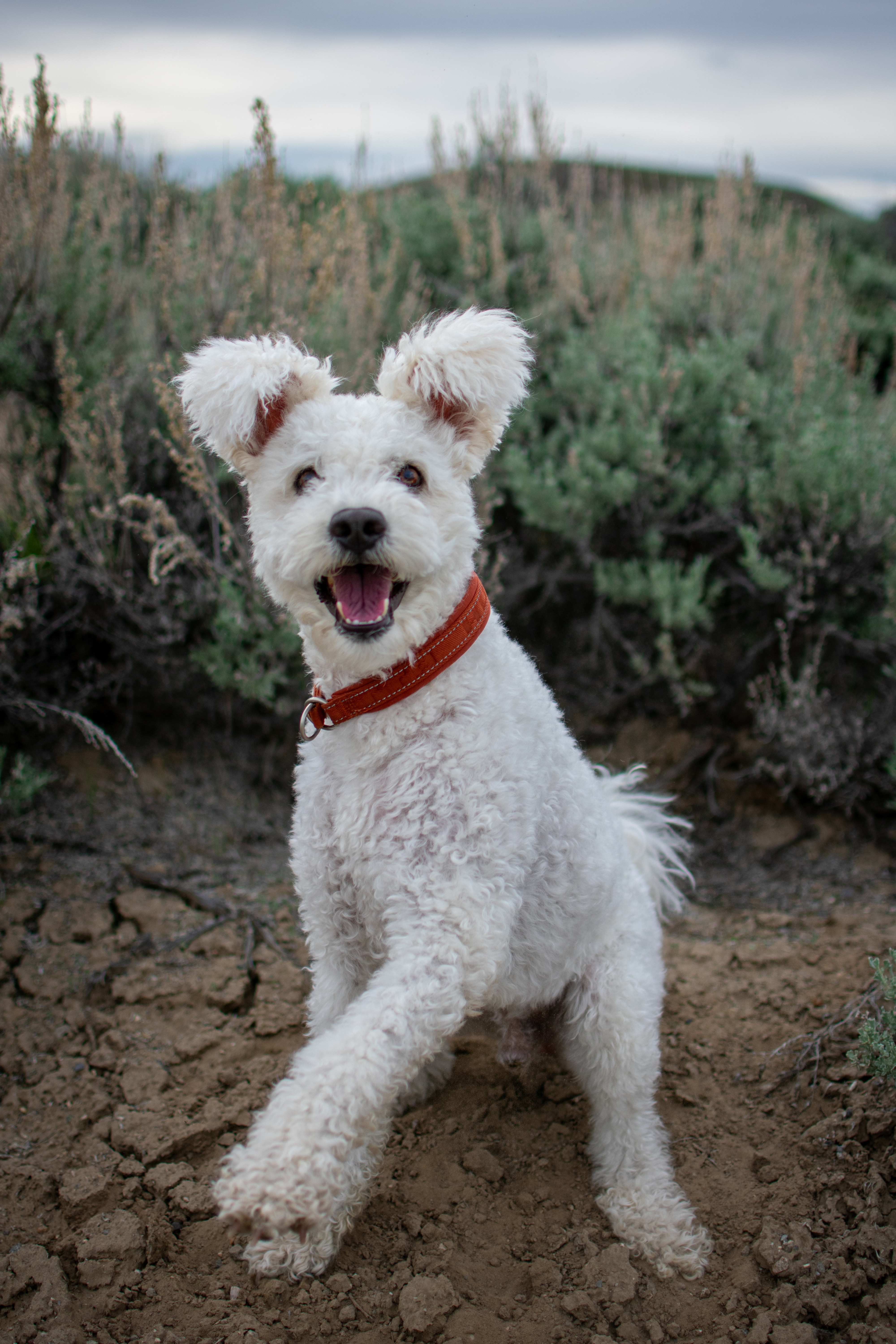
Primary Lens Luxation (PLL)
Primary lens luxation is when the eye lens breaks down and slips out of place, leading to blindness in dogs. There is no cure for PLL, but affected dogs can live long and happy lives with extra care from their pet parents.
Symptoms of PLL include:
- Red eyes
- Pain
- Tearing
- Squinting
- Cloudy eyes
- Change in pupil shape or size
Schedule a vet appointment for your Pumi if you notice any of these signs.
What To Feed a Pumi
For good health, pick a well-balanced and high-quality dog food for your Pumi.
To simplify your search, focus on dog food formulas that are specific to your pet’s stage of life (puppy, active adult, or senior dog). You should also look for a formula that’s compliant with nutritional standards for dogs from the Association of American Feed Control Officials (AAFCO).
Choose the best dog food with help from your veterinarian.
How To Feed a Pumi
Like many dogs, an adult Pumi should be fed two meals each day. Split the recommended daily amount of food for your dog into two meals; give one to your dog in the morning and serve the rest in the evening.
Pumi puppies may need to eat more frequently to prevent hypoglycemia (low blood sugar). Ask your vet how often you should feed your dog.
How Much Should You Feed a Pumi?
For a Pumi dog in good health, refer to the feeding guidelines on the dog food packaging you choose. These guidelines are based on the weight of your dog and serve as a starting point for determining how much to feed each day.
If you notice changes in your dog’s weight, you may need to adjust the portion size accordingly. Your veterinarian can give you specific guidance on how much to feed a Pumi dog based on their activity level, age, and other health factors.
Nutritional Tips for Pumik
When fed a nutritionally complete dog food formula, most Pumik won’t require supplements. However, your vet may prescribe supplements to your dog depending on your Pumi’s health.
That said, never give your dog a supplement without speaking with your veterinarian first.
Behavior and Training Tips for Pumi Dogs
Pumi Personality and Temperament
To understand the Hungarian Pumi dog’s personality, remember the breed’s working dog background.
“The Pumi is similar to other herding breeds in that they are active, extremely intelligent, and need a job,” says Pumik breeder Chris Levy.
These dogs thrive on a close working relationship with their pet parent, but Levy cautions this can lead to separation anxiety. It’s important to teach a Pumi puppy that it’s OK to be left alone; crate training can help.
Socialization is very important for the Pumi breed, who tend to be one-person dogs and cautious around new people.
“They are wary and shy with strangers if not introduced early to many experiences,” says Nelson. She adds that Pumik are generally compatible with children, as long as they become accustomed at an early age to the noise and activity of kids.
Pumi Behavior
Pumik have a confident, lively, and alert disposition—all traits that were essential for driving livestock like sheep and cattle. This heritage explains the Pumi’s behavior today.
“They are wary of unusual activity and want to do what the shepherd (in this case, the family) directs them to do,” Levy says.
Even now, Pumik continue to be an integral part of the agricultural lifestyle of Hungarian farmers. Here in the United States, they have been used to herd sheep and cattle, along with smaller animals like rabbits and chickens, says Levy.
Vigilance to any unusual sights or sounds is part of the Pumi personality. Pumik often bark to sound the alarm, but whether the alert is justified is sometimes up for debate. “They don’t bark without reason, but their reason could be a butterfly flying by,” says Levi.
Pumi Training
A Pumi is smart and independent, so overly repetitive tasks won’t hold the dog’s attention. “The Pumi is not much different than raising a 5-year-old child,” Levy says. “They want to please but also want to understand why they’re doing it.”
Always use positive reinforcement training methods, rewarding your dog with treats, toys, and praise.
Fun Activities for Pumik
Pumi Grooming Guide
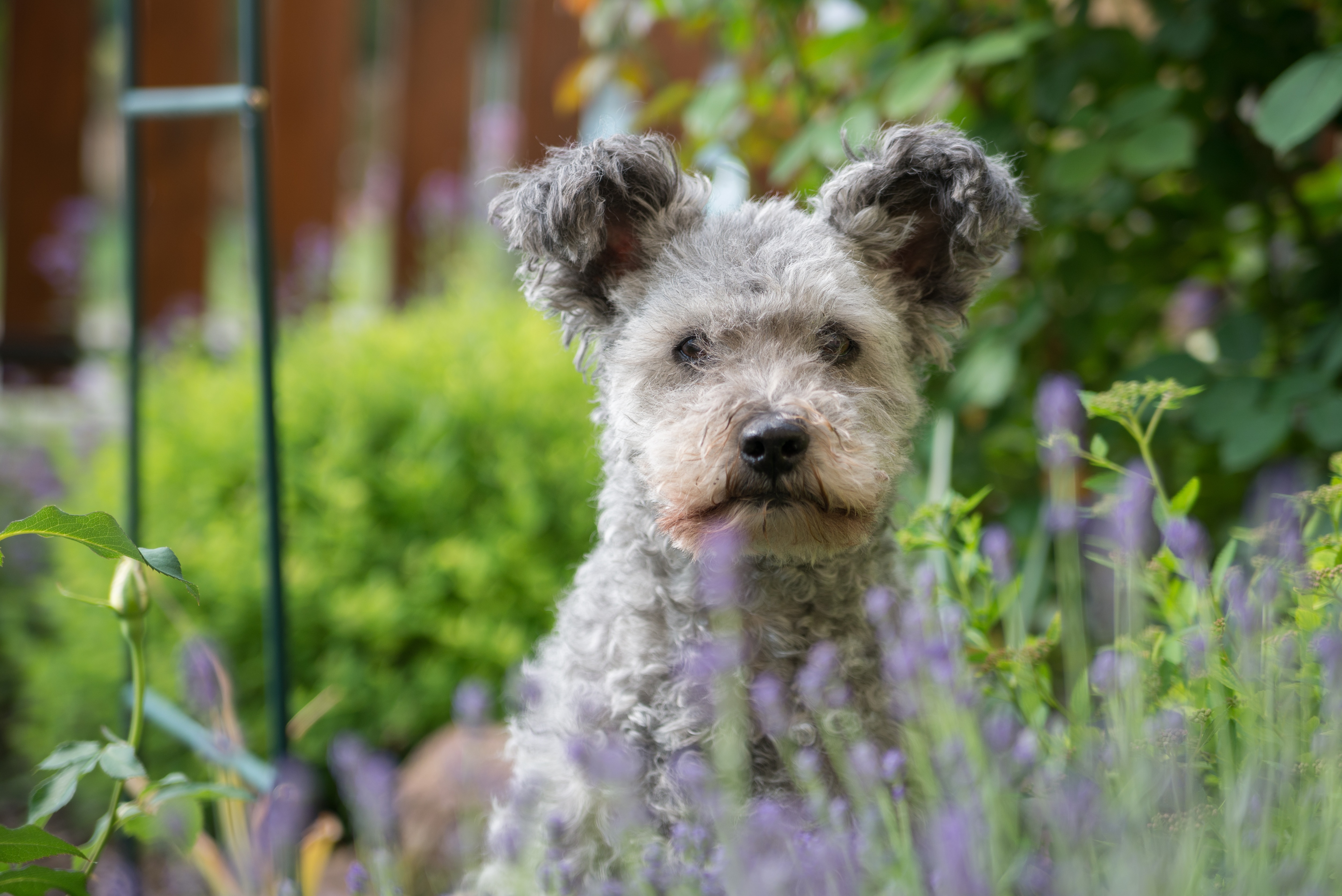
The Pumi has a medium-length double coat that forms curly or wavy tufts of hair, and comes in colors including black, white, gray, or fawn. The harsher outer coat protects a layer of softer hair.
While the grooming routine is relatively low-maintenance, it can be challenging to find a groomer who knows how to properly care for the Pumi’s coat. For that reason, most Pumi pet parents groom their dogs themselves, a process that involves regular brushing and occasional trimming.
Skin Care
No special skin care requirements are recommended for the Pumi. An occasional bath when the dog becomes especially dirty might be called for, but it’s important that you never blow-dry the dog’s coat.
Instead, the coat should be allowed to air dry, which will allow the characteristically curly tufts to develop.
Coat Care
Keeping the Pumi’s coat looking its best isn’t overly complicated, but pet parents need to understand the nature of the double coat.
“The harsh hairs prevent the coat from matting easily, so an adult needs to be combed out about every two to three weeks,” says Levy. In general, Pumik don’t shed a lot. But these regular combing sessions are important for removing loose, dead hair.
Pumik puppies, on the other hand, lack the harsher hair of the outer coat. So until it develops (typically by the time your dog is 2 or 3 years old), more frequent combing is required, Levy says.
While a Pumi’s hair doesn’t shed much, it does continue to grow and requires trimming every few months.
Recommended Products
Eye Care
There is no special eye care required for a Pumi dog. However, give regular attention to the health of your pet’s eyes.
When grooming or petting your dog, check the eyes for signs of cloudiness, irritation, or discharge. If you notice these symptoms or other changes in your dog’s eyes, contact your veterinarian right away.
As with any dog, keep your Pumi’s ears free of debris and dirt. Regularly handle and inspect the ears for excessive wax buildup, redness, discharge, or sensitivity, which could be signs of an ear infection or injury.
Consult your veterinarian about these or other symptoms related to your dog’s ears. They may recommend you clean your dog’s ears with a vet-recommended ear cleaner.
Ear Care
As with any dog, keep your Pumi’s ears free of debris and dirt. Regularly handle and inspect the ears for excessive wax buildup, redness, discharge, or sensitivity, which could be signs of an ear infection or injury.
Consult your veterinarian about these or other symptoms related to your dog’s ears. They may recommend you clean your dog’s ears with a vet-recommended ear cleaner.
Recommended Products
Considerations for Pet Parents
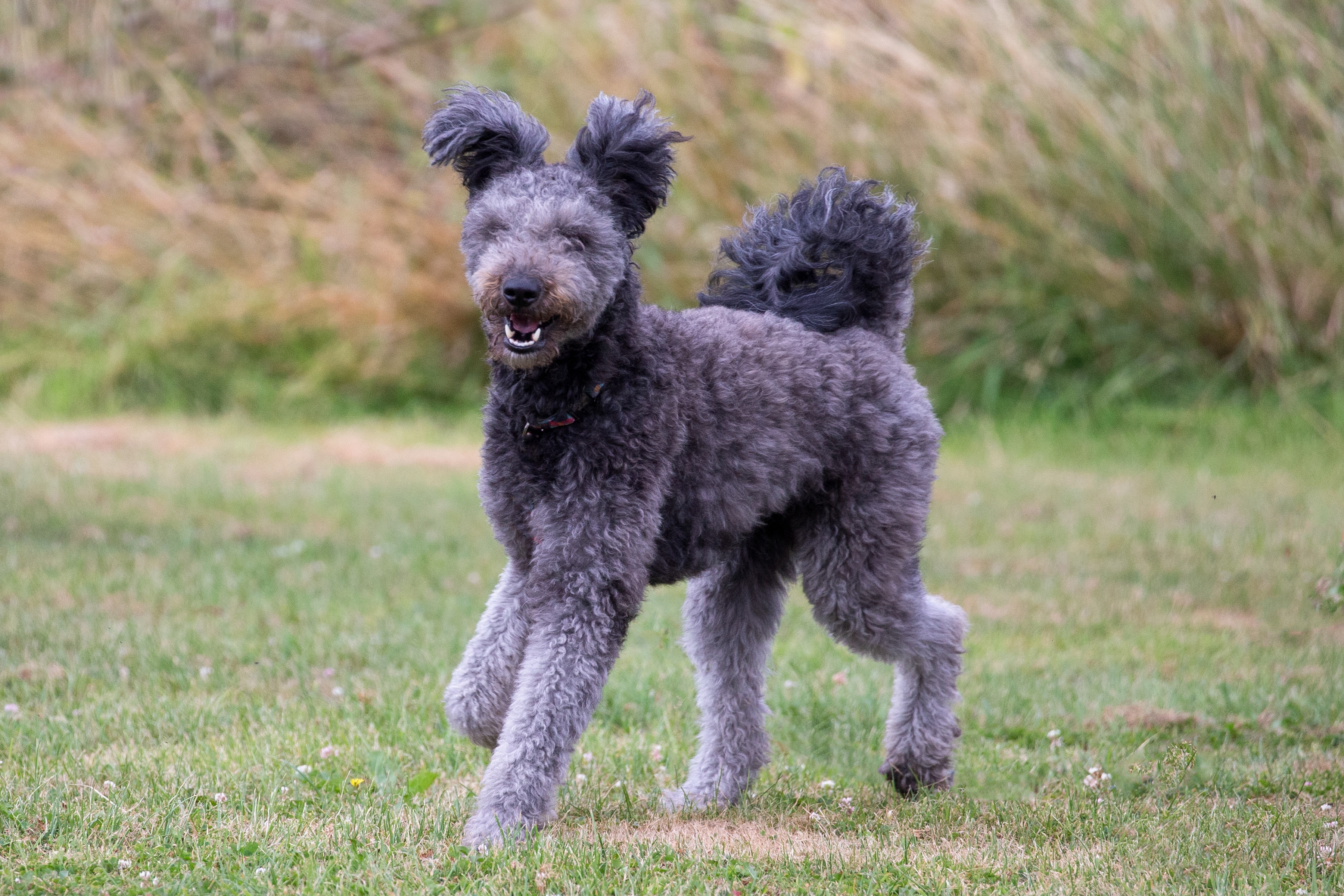
With a zest for activity, the Pumi is an excellent partner for active individuals or families who want a canine companion. Because these dogs bond closely to a single person, they do fine in one-person households, but can also adapt to a family environment if they’re exposed to a busy and noisy environment from an early age.
In any type of household, the most important factors for success will be consistent training and socialization. First-time dog parents should not enter a partnership with a Pumi without carefully considering the investment of time and effort it will take to appropriately train these intelligent and clever dogs. With dedication and commitment, a Pumi can make an exceptional and loyal companion.
Pumi FAQs
Is a Pumi a good family dog?
Yes, the Pumi has the potential to be a good family dog—but it’s only possible through training and early socialization.
By nature, these dogs are oriented toward a single family member, and they are vigilant to unusual sights and sounds. A hectic household can stress a Pumi who used to constant motion and activity, but safe exposure to different scenarios and people of all ages can make these dogs more adaptable.
How much does a Pumi dog cost?
The average Pumi dog price in the U.S. is around $2,000 for a puppy, although individual puppies might cost more or less based on pedigree and other factors. They are expensive because they are still relatively rare in the U.S.
Do Pumi dogs bark a lot?
Yes, the Pumi is a vocal breed that is likely to bark more than other breeds. This tendency can be curbed with consistent training, but it’s important to recognize that barking is part of the Pumi personality—although they don’t bark without reason.

